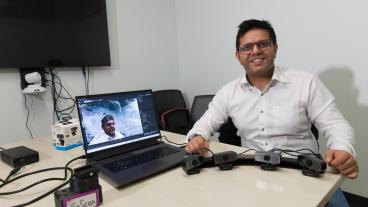Mines researchers explore way to reduce cost of high-efficiency solar cells
Researchers at Colorado School of Mines and the U.S. Department of Energy’s National Renewable Energy Laboratory recently published findings on a critical route to reducing the cost of high-efficiency solar cells in the high-impact journal Advanced Energy Materials.
Corinne Packard, associate professor of metallurgical and materials engineering, led the research, facilitated by her joint appointment at NREL. Co-authors include current Mines PhD student Anna Braun, former postdoctoral researcher Jie Chen, and recent graduate Jason Chenenko M.S. ’21, as well as NREL researchers (and Mines alumni) John Mangum PhD ’19 and Harvey Guthrey PhD ’13.
“One of the largest costs in producing high-efficiency solar cells is the substrate crystal, which is necessary to get proper atomic alignment for defect-free crystal growth to form the solar cell,” Packard said. “But only a small percentage of the total substrate thickness is actually necessary for the performance of the device.”
To address that challenge, Packard’s team in the Colorado Center for Advanced Ceramics (CCAC) has been working on a fracture process to remove the device from the substrate so that the substrate can be reused.
But while device performance has remained the same after removal, the fracturing process leaves behind a surface that while chemically pristine, is not perfectly smooth. Re-preparing the surface for reuse can be expensive, Packard said.
“We attempted to skip that step entirely and grow a new solar cell structure directly on the fracture surface of the remaining substrate crystal. We studied the effect of local surface morphology imperfections on device performance and identified the underlying causes of local device performance degradation around specific types of surface defects,” Packard said. “What we found is that areas free of surface defects yield device efficiencies just as high as we get on conventional, highly polished, new substrate crystals, which is very promising for direct regrowth on spalled wafers.”
Read the full paper, “High Efficiency Solar Cells Grown on Spalled Germanium for Substrate Reuse without Polishing,” at https://onlinelibrary.wiley.com/doi/full/10.1002/aenm.202201332.




